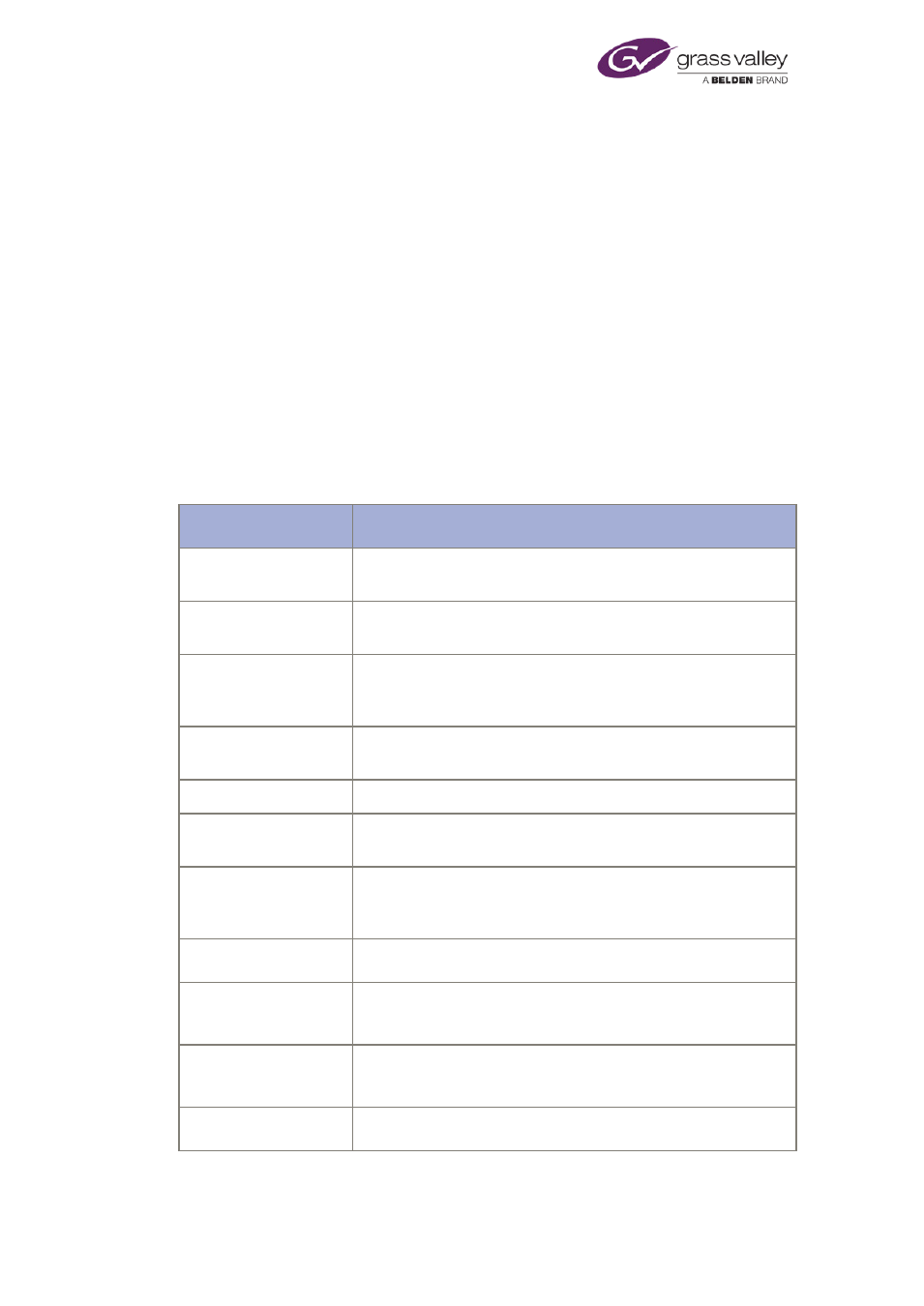Security attributes – Grass Valley iTX System v.2.6 User Manual
Page 73

Security in an iTX system
The security system keeps three permanent groups – Everyone, Users and Administrators.
•
All registered users and the guest user are members of the Everyone group.
•
All registered users are members of the Users groups.
•
The Administrators group contains a built-in administrator; other users who require
the same administrative rights as the built-in administrator may be added to this
group. See below, "The built-in administrator".
You cannot delete these groups.
Some iTX services create groups when they are installed. For instance, the OPUS2 Service
creates a group called OPUS Administrators (and assigns a security attribute to it). By adding
users to these groups, you can give them special rights for working with the services.
Security attributes
Security attributes determine the rights of users to perform certain actions. To give a user
particular rights, you may assign any of these attributes to the user account:
Attribute
Rights
Desktop Administrator
The ability to create and edit iTX Desktop layouts, and make them
available to any user or workstation.
Desktop Author
The ability for any particular user to build and edit that user's own
layouts, and change what layouts appear in the user view.
Manual Logon
The ability to log onto certain iTX services and Desktop components
with different user rights to those of the user that is logged onto
the machine. See later in this section, "About Manual Logon".
Security Replication
The ability to copy security data (used by the security system)
across domains in a multi-domain system.
Impersonation
Allows impersonation of another user.
Service Manager
The ability to use the Server Manager to remotely start and stop
services in the local domain.
Service Administrator
The same rights given by the Service Manager attribute. Also, the
ability to remotely change settings for any service running under a
Server Controller in the local domain.
Search Publisher
Allows a user to publish saved searches.
Job Type Management
Indicates that a user, group, application or computer may create job
types.
Opus Job Administrator
Indicates that a user, group, application or computer has full control
over all job instances.
Dashboard Author
Indicates that a user can author SmartClient dashboards.
March 2015
System Administrator Guide
Page 73 of 404